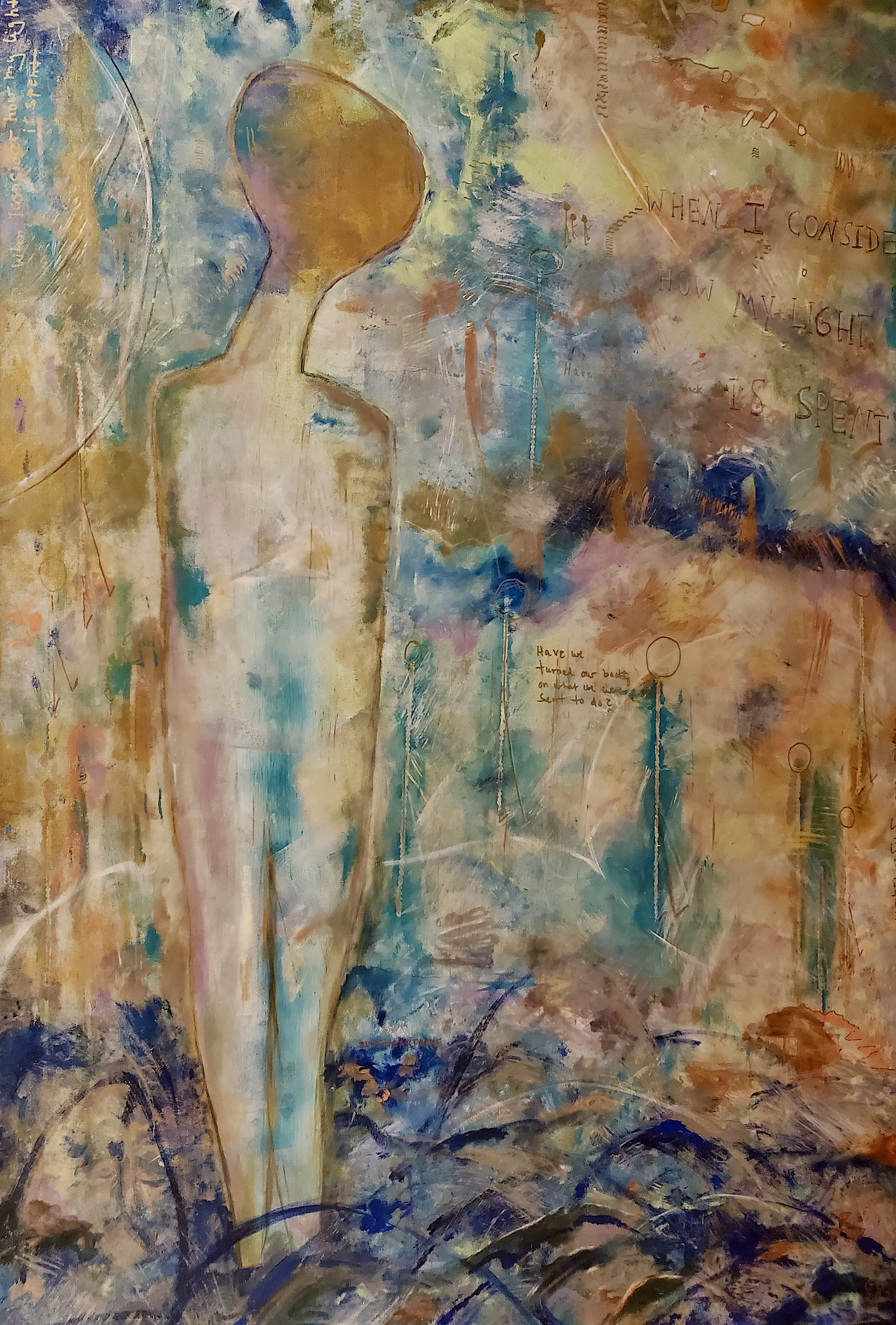Gerburg Garmann
As an ex-pat residing in the United States, painting is yet another foreign language for me. It allows for an added layer of aesthetic expression by bringing different artistic and intellectual traditions together. It is a new language, which can be shared by many, verbally and non-verbally. Because paintings (just as other forms of art) provide symbolic as well as real meeting grounds of the spiritual and our day-to-day experiences, they solicit our reaction no matter whether our engagement with the actual piece of art ends up in affection or dislike, in affirmation or disapproval. In the end, all artwork manifests a story.
Using acrylics, charcoal and ink, my chosen mission is to tell -- over and over -- the often-untold (or under-told) stories about women via abstract portraits and foster a sense of joyful resilience. My pieces are meant to evoke (or rekindle) a wide variety of thoughts and emotions, bear witness, affirm individual experiences, engender discussions, and –at their best– provide the viewer with aesthetic pleasure as well as intellectual and emotional challenges. I hope my painting ‘Turn around again, Miriam’ does exactly that.
Turn Around, Miriam
My painting depicts Miriam, the one who according to biblical narrative held the key to water. In my painting she has become a faceless figure who has turned her back away from both the viewer as well as the Exodus figures that populate the canvas. She is somewhat of a Munch-like figure without ‘The Scream.’
When I painted her, I envisioned her looking into the distance or unclear future right after her death. She mimics Caspar David Friedrich’s famous painting ‘Wanderer above the Sea of Fog’ (1818), though, instead of standing on a steep rock looking into (and overlooking an) infinite space she stands in her own element: ankle-deep in water. She is transparent as her body holds water, has become water. Even after her death, I picture her as the eternal water bearer.
Towering over the scene she is surprisingly unthreatening, but one cannot be sure if she is aware of her surroundings, i.e., her placement into a surreal allegorical landscape, that combines the tension of water and rock. Through the inscription of lines from Sophocles and Milton directly onto the canvas (here a nod to Cy Twombly is in order) the question that looms over the painting is ‘What next?’ not just for the people undertaking the Exodus toward the Promised Land but also for our own time: How do we negotiate the tension of our own needs for rock and water and their simultaneous protection from our often-careless wants and exploitation?
We want Miriam to turn around and have her do what she always did: provide us with water, wisdom, and dance. In my interpretation of the cultural ecologies hidden in the Exodus, she, however, does not grant us our wish. Nonetheless she leaves us with music, another aesthetic form whose sonic properties allow us to relate the Exodus scene as an ecologically charged one to our own times: Please listen to my composition of five movements ‘Lament,’ ‘Currents over Babbling Water,’ ’Shifting & Sliding,’ ‘Rock Fall,’ and ‘Coda’ that complement the painting (text-only version available here). My heartfelt thanks go to my collaborators Dr. Marc Hudson, professor emeritus of English at Wabash College, and Dr. Brett Leonard, professor and director of the Technology and Recording programs at the University of Indianapolis. Dr. Hudson, a wonderful poet in his own right, graciously agreed to do the voiceover for the five movements. Dr. Leonard put in many hours to polish the sound files (mixing and voiceover) to guarantee their impeccable professional quality. Without their kind support, this part of my Miriam project would not have been possible.
In the end, my ‘Miriam- project’ is a multi-sensorial piece willing to hold uncomfortable truths we cannot outpace. It’s also a piece that signals hope in that it at once invites activism, imagination, and reflection as expressed in the last stanza of movement five: So, we will drink and walk and wait and see.
About Gerburg
Gerburg is native of Germany, and a professor of German and French at the University of Indianapolis. Her scholarly publications appear in English, German, and French in international journals. Her poems and paintings have appeared in various magazines and anthologies around the world. For more information please visit: https://www.gerburggarmann.com

